Time Tracking Best Practices for Call Centers
In this article, you will learn about time tracking best practices for call centers are critical for productivity; this guide covers essential strategies, tools, and tips to enhance performance.
5 min read
Time tracking best practices for call centers are crucial for enhancing productivity, ensuring compliance, and improving overall performance.
In this blog post, we will explore essential strategies and tips on managing time effectively in a call center environment. From understanding the importance of time tracking to implementing tools and strategies that work, this blog will provide actionable insights to help you optimize your call center’s operations with time tracking.
Why Time Tracking is Crucial in Call Centers
Pro Tip
Leverage an automated time tracking tool like HiveDesk to reduce administrative overhead and enhance the accuracy of logged hours.
Implementing Effective Time Tracking Tools
Choosing the right time tracking tool is pivotal in managing a successful call center. Look for features like real-time tracking, reporting capabilities, and integration with other CRM or workforce management systems.
Real-time tracking ensures that all activities are recorded as they happen, offering managers an up-to-the-minute view of operations. This is crucial for handling live call volume and making swift adjustments as needed.
Reporting capabilities allow for detailed analysis of the data collected. Managers can review metrics such as average call handling time, time spent on breaks, and after-call work. These insights facilitate better decision-making and process optimization.
Integration with other systems ensures that the time tracking tool works seamlessly with existing technology. This can bring greater cohesion to various functions like payroll, performance analytics, and scheduling.
Pro Tip
Opt for cloud-based time tracking solutions to enable real-time monitoring and data access from anywhere.
Training Call Center Employees on Time Management
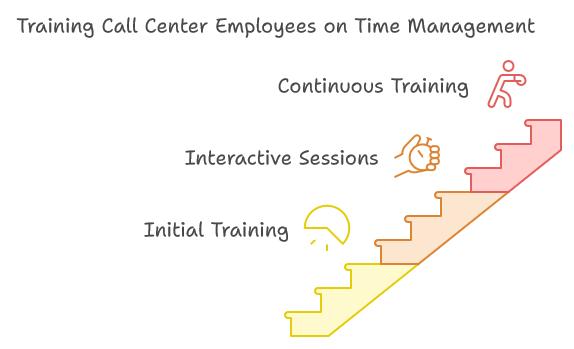
Effective time tracking starts with well-trained employees. Invest in training programs that focus on the importance of time management and how to use the chosen time tracking tools effectively.
Training sessions should be interactive and hands-on, allowing employees to practice using the tools in real scenarios. This ensures that they are comfortable and familiar with the software, reducing the risk of errors and resistance to change.
Continuous training is just as crucial as initial onboarding. Conduct periodic refresher courses and provide resources for self-paced learning. Keep employees updated on any new features or system upgrades to ensure they are always using the tools to their fullest potential.
Pro Tip
Create a supportive environment where employees feel comfortable asking questions and sharing feedback about the time tracking tools.
Balancing Productivity and Breaks in Call Centers
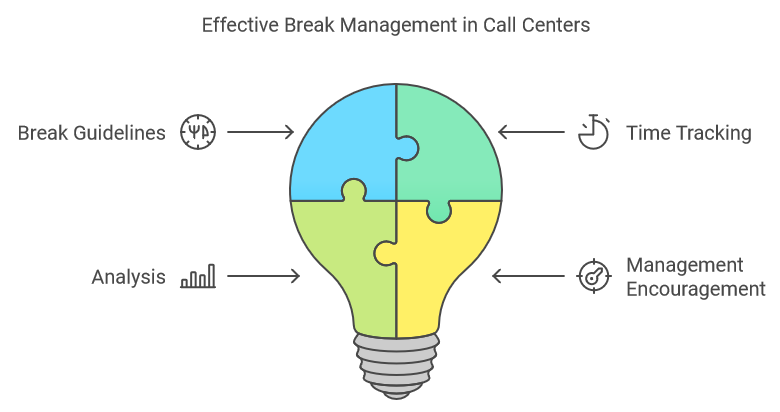
While it’s important to track work hours, it’s equally crucial to ensure that employees are taking necessary breaks to avoid burnout. Establish clear guidelines on break times and include these in your time tracking system.
Use the data from time tracking tools to monitor how frequently breaks are being taken and their durations. Analyze this information to ensure that breaks are being used effectively and not contributing to unnecessary idle time.
Encourage managers to schedule regular breaks and short pauses to help maintain employee productivity and well-being. Studies show that taking short, frequent breaks can help revive focus and enhance overall performance.
Pro Tip
Implement a reminder system within your time tracking tool to alert employees when it’s time to take a break.
Analyzing Data to Improve Efficiency of Your Call Center
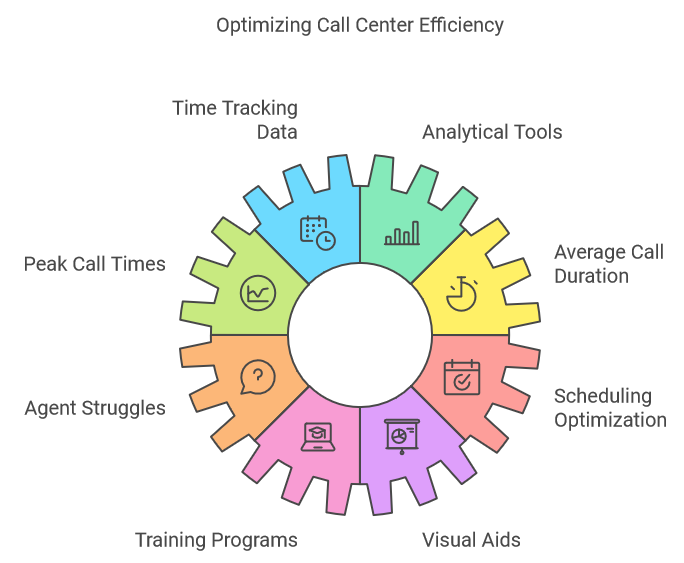
Once you’ve accumulated time tracking data, it’s essential to analyze it to identify trends and areas for improvement. Utilize analytical tools to convert raw data into actionable insights.
Look for patterns such as peak call times, average call duration, and periods when agents struggle with particular types of calls. These insights can help optimize scheduling, training programs, and overall call center strategies.
Present your findings in a way that is easy to understand for both management and employees. Use visual aids like graphs and charts to make data more accessible and actionable.
Pro Tip
Regularly schedule meetings to review time tracking analytics and develop action plans for continuous improvement.
Enhancing Employee Accountability in Call Centers
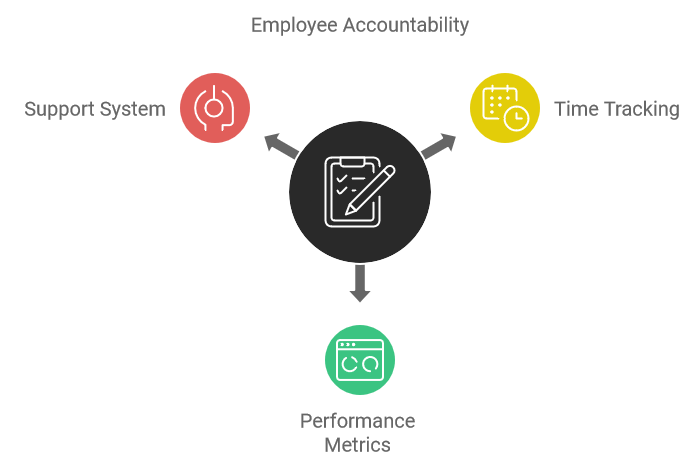
Time tracking tools foster greater accountability by providing transparency into how working hours are spent. Educate your team on the importance of adherence to schedules and active engagement during work hours.
Establish KPIs and performance metrics that are directly influenced by time tracking data. Regularly review these metrics and provide constructive feedback to employees.
Implementing an open-door policy can encourage agents to discuss any challenges they face in managing their time better. By creating a support system, you can address issues promptly and enable employees to perform optimally.
Pro Tip
Recognize and reward employees who consistently demonstrate strong time management and accountability. This reinforces positive behavior and motivates the team.
Using Time Tracking Data for Workforce Planning in Contact Centers
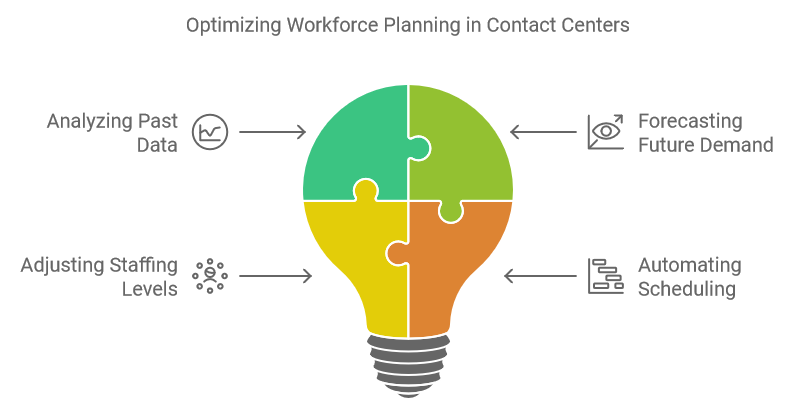
Workforce planning involves predicting call volumes and aligning staffing levels accordingly. Time tracking data provides historical trends and patterns that can be invaluable for this purpose.
Analyze past data to forecast future demand accurately. Ensure you have enough agents available during peak times and adjust staffing levels during quieter periods to optimize resource use.
Automate employee scheduling processes using tools that integrate with your time tracking system. Automation reduces human errors and ensures that schedules are created based on accurate data, improving efficiency.
Pro Tip
Regularly review and adjust workforce plans based on real-time data to stay responsive to dynamic market conditions.
Monitoring Customer Service Agent Productivity in Real Time
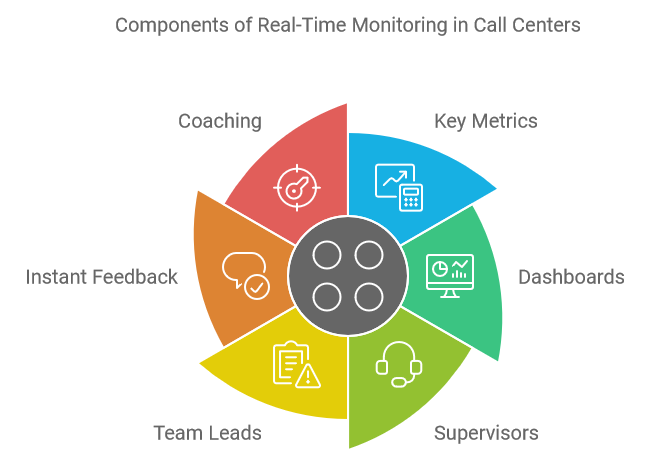
Pro Tip
Integrate real-time alerts within your time tracking system to notify supervisors of any anomalies in agent performance.
Ensuring Data Privacy and Compliance in Call Centers
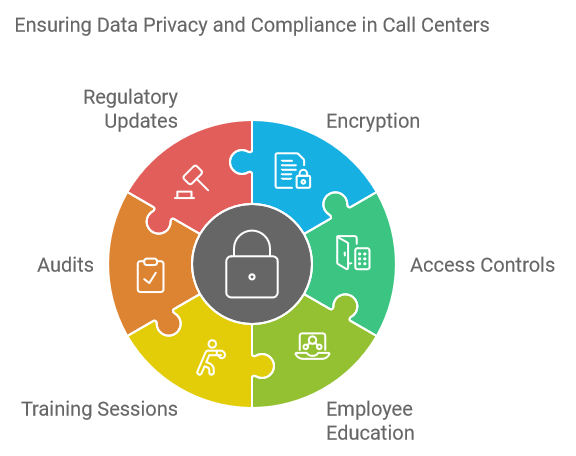
Given the sensitivity of time tracking data, it’s vital to ensure that it is handled securely and complies with relevant regulations. Implement encryption and stringent access controls to protect this data.
Educate employees on data privacy policies and their responsibilities in safeguarding information. Regular training sessions can reinforce the importance of compliance and the steps required to maintain data integrity.
Regularly audit your time tracking and data privacy processes to identify any potential vulnerabilities or compliance issues. Stay updated with regulatory changes and adjust your practices as needed to stay compliant.
Pro Tip
Use multi-factor authentication to add an extra layer of security to your time tracking system.
Conclusion: Optimizing Time Tracking for Call Centers
Time tracking best practices for call centers are essential for boosting productivity, ensuring compliance, and optimizing workforce management. By choosing the right tools, training employees, balancing productivity with necessary breaks, and analyzing data effectively, call centers can operate more efficiently and provide better service to their customers.
Implement these best practices in your call center to create a more accountable, efficient, and productive environment. With the right approach to time tracking, you can achieve significant improvements in performance and customer satisfaction.
Pro Tip
Continuously review and refine your time tracking practices to adapt to evolving business needs and technological advancements.
Start transformation of your call center today!
Say hello to productivity, accuracy, and profitable growth. Streamline your call center operations with HiveDesk.



